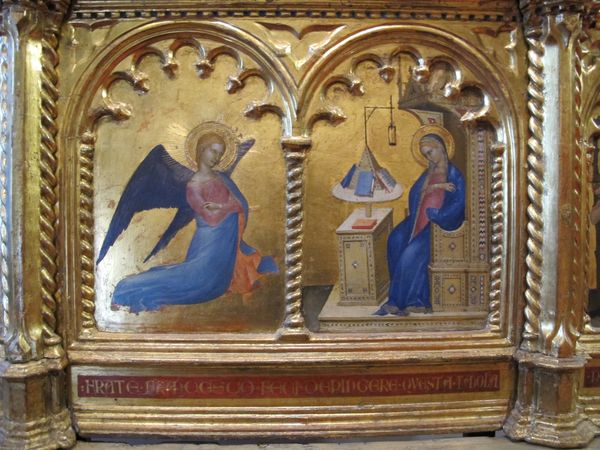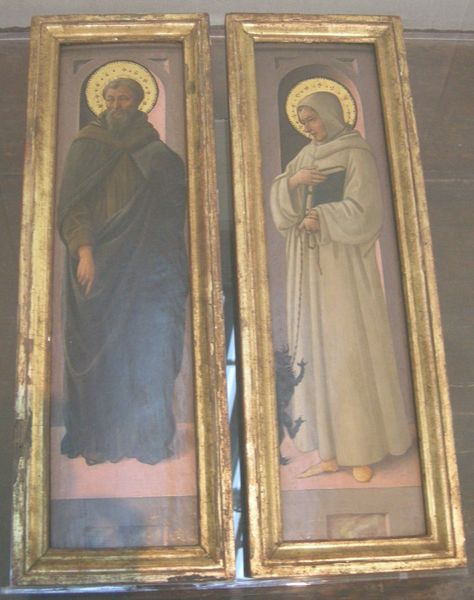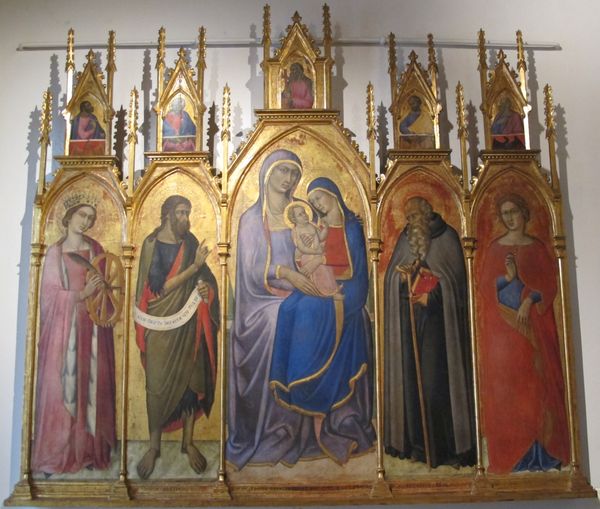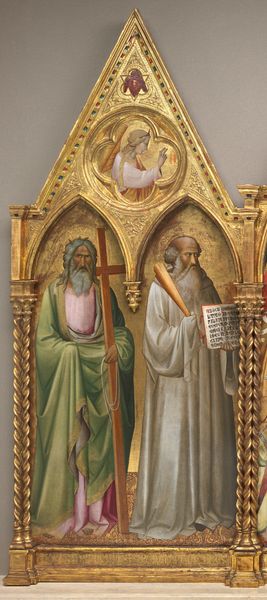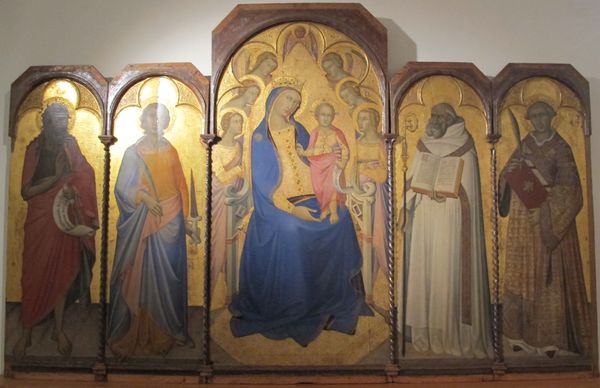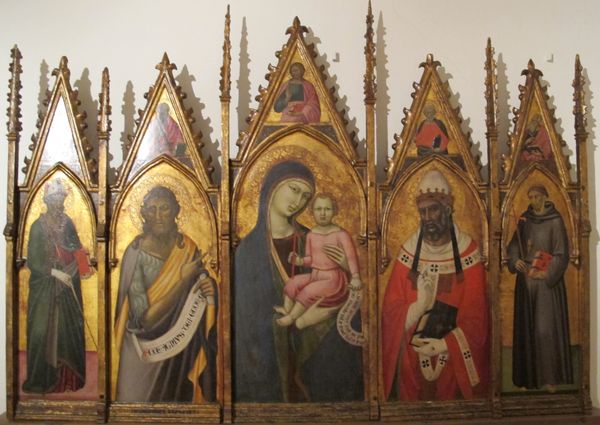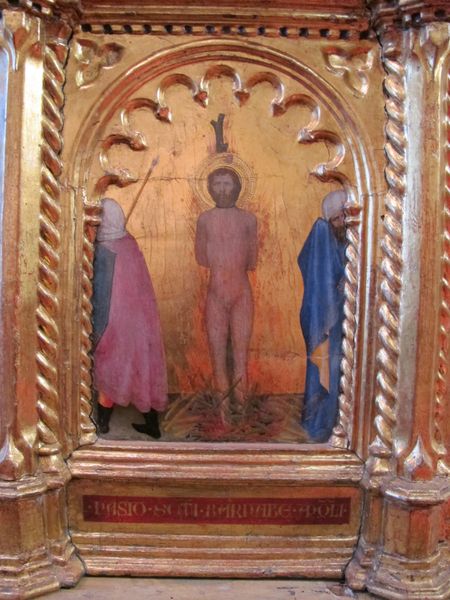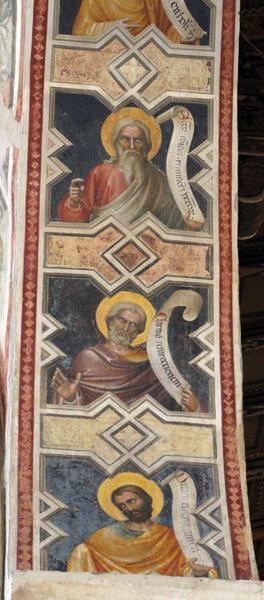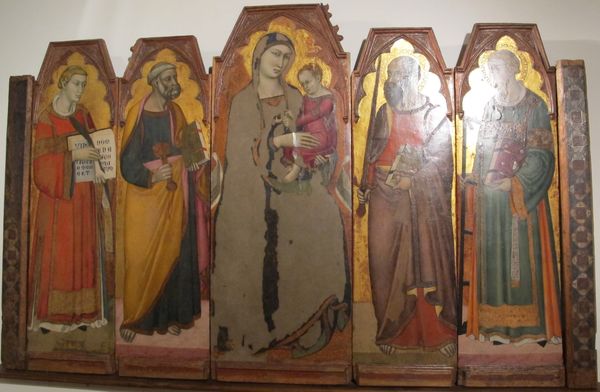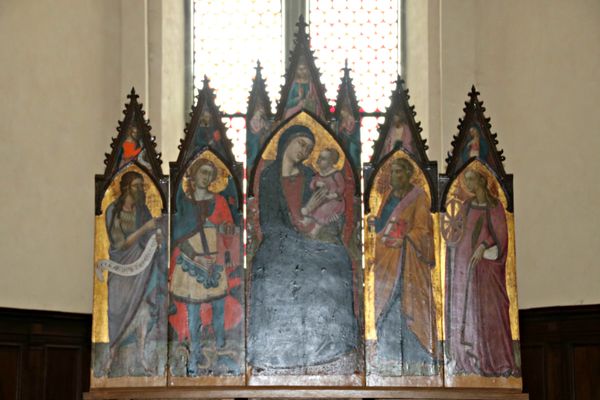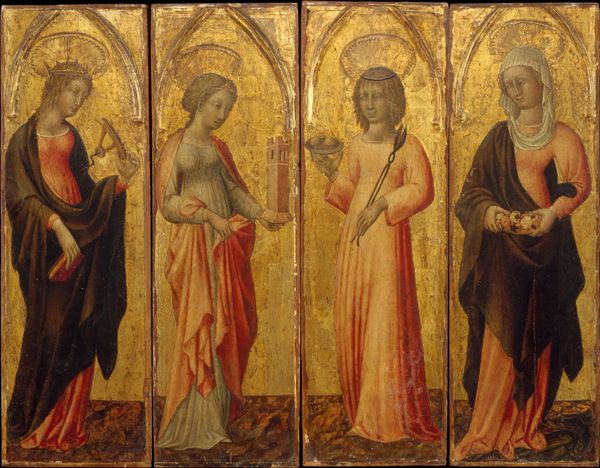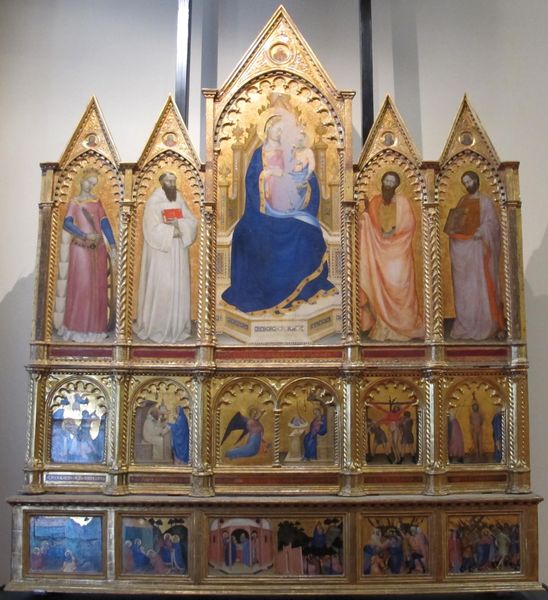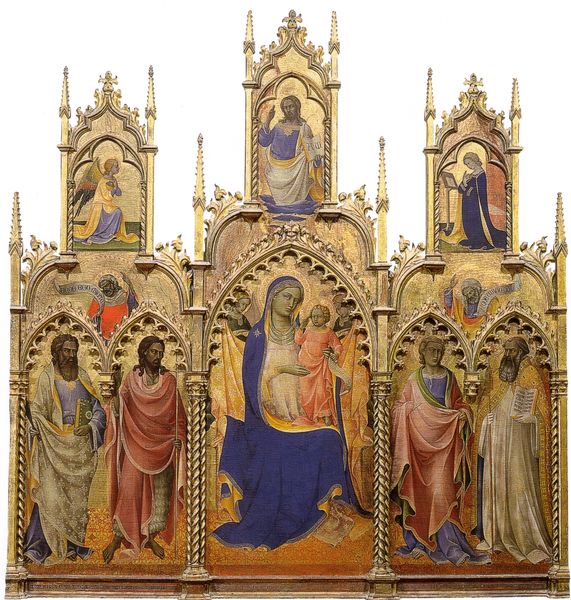
panel, tempera, painting
#
portrait
#
gouache
#
medieval
#
panel
#
water colours
#
tempera
#
painting
#
figuration
#
oil painting
#
history-painting
#
academic-art
#
italian-renaissance
Copyright: Public domain
Curator: Ah, welcome. Here we have Giovanni da Milano's "Da Spedale Della Misericordia," created around 1370, using tempera on panel. It's an intriguing piece, don't you think? Editor: Immediately, I'm struck by how rigidly the figures are placed against that shimmering gold leaf background. It feels less like divine space and more like gilded confinement. Curator: The gold, so lavish, was a significant aspect of medieval and early Renaissance art, intended to evoke the divine. Beyond the visual, consider its inherent worth. Patronage would dictate what type of material, and how much, an artist used. What do you suppose went into securing and applying all that gold? Editor: Absolutely, that gold shouts of power. But what intrigues me more is the tempera. Think of the craftsman, meticulously grinding pigments, mixing them with egg yolk—a perishable binder! And those colors... pale and intentionally thin in layers. What was that process intended to invoke? It's laborious, physical, almost a devotional act itself, isn’t it? Curator: It very much was! Giovanni's tempera layering, something of a signature. Notice, too, how he attempts depth, how the folds of drapery offer only slight modeling? The two saints stare placidly outward, their gaze conveying something... hopeful, I think? They are holding scrolls, possibly biblical verses, as the church would use those particular historical figures. The piece was painted to convey divine hope for the viewer of the time, considering there were frequent struggles and outbreaks of disease at this time. Editor: "Hopeful"...yes, but a tightly controlled hope. Those repetitive, patterned borders surrounding them? The meticulous detail on the gold trim almost boxes the subjects in. The materiality speaks of control and authority rather than the individual. Curator: You view it as restriction; I see deliberate focus! We must remember the cultural context; individual expression, while present, was filtered through a powerful religious lens. Also, those borders show exquisite workmanship and artistic license in creating beautiful detail and framing our figures. The artist elevated their status with every purposeful brushstroke. Editor: Agreed, every element served a purpose. Even the visible brushstrokes in the faces or robes. It wasn't necessarily about the pursuit of perfection but a record of the artist's labor. I am also curious if the gold has any additives in it? Curator: Wonderful insight, you are getting down into the bones of the artwork! Examining how materiality affected the historical experience allows us to fully appreciate these medieval panels today. Editor: Indeed. And viewing the material with curiosity brings this “historical painting” into today with resonance and respect for its artistry.
Comments
No comments
Be the first to comment and join the conversation on the ultimate creative platform.
